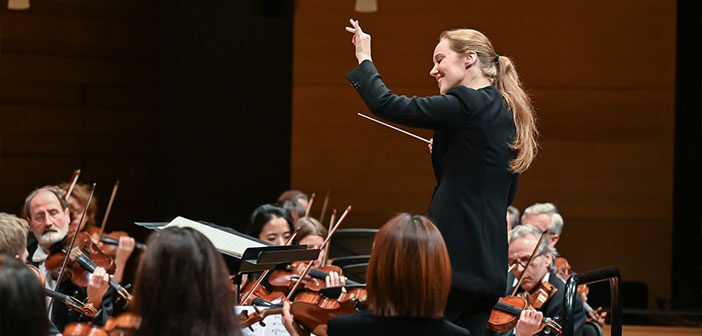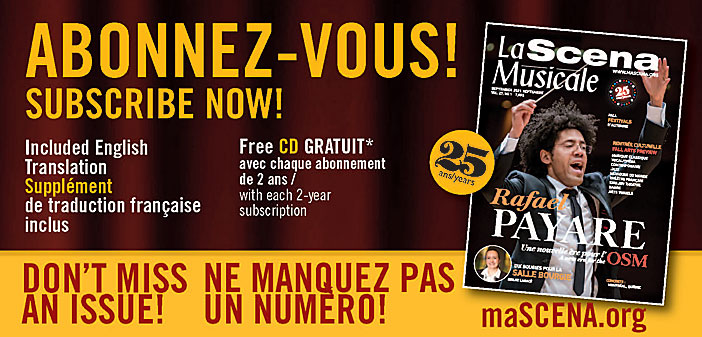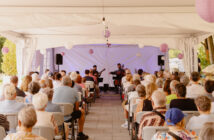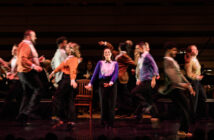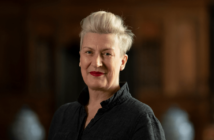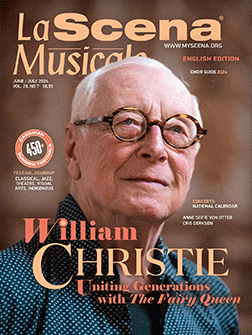The hottest ticket in Toronto this weekend was no doubt Staatskapelle Berlin, whose Canadian debut was sold out months before the orchestra took to the stage.
The 453-year-old orchestra is one of the oldest in the world, and boasts a history of prestigious leaders, including Richard Strauss and Herbert Von Karajan. Even though Toronto audiences were disappointed that the legendary Maestro Daniel Barenboim had to pull out from the orchestra’s North American tour for health reasons, it did not diminish the excitement for this highly anticipated event, the experience of which was elevated by the intimate setting and superb acoustics of Koerner Hall.
Staatskapelle Berlin made the daring choice to fill Barenboim’s big shoes with Lithuanian conductor Giedrė Šlekytė. At the age of 34, she is virtually unknown outside of Europe, and only debuted with Staatskapelle Berlin earlier this month – not to mention that she has never stepped foot on North American soil. Šlekytė is the Principal Guest Conductor of Bruckner Orchestra Linz, and has worked with many well-known orchestras and opera houses across Europe. It is exciting and forward-thinking for this centuries-old traditional institution to showcase and collaborate with a young female conductor, who is still relatively early in her career.
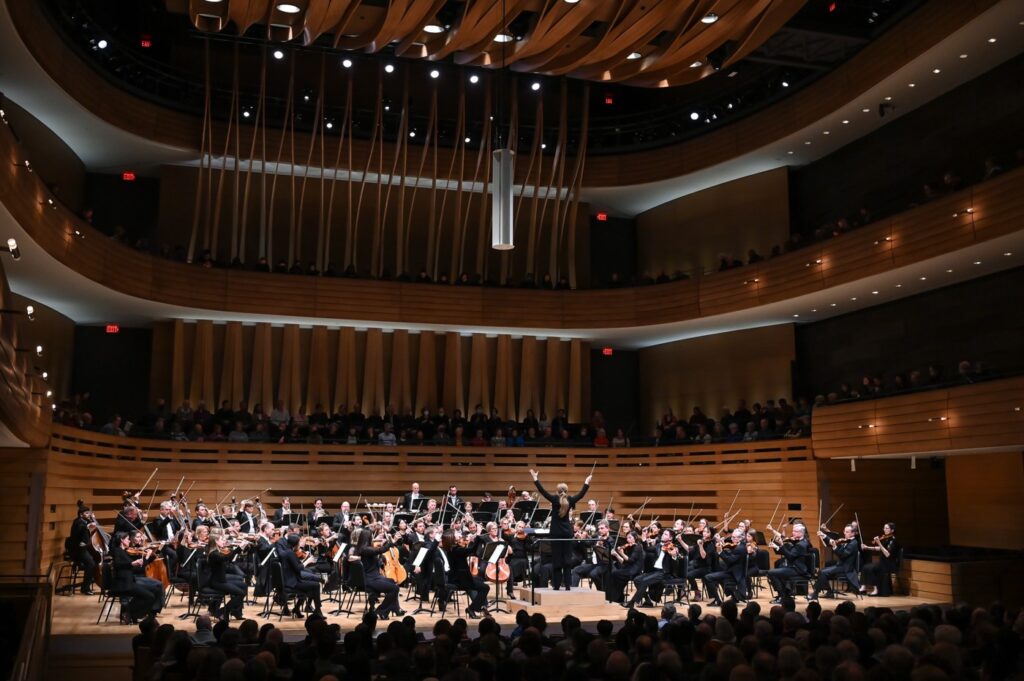
Staatskapelle Berlin Orchestra (Photo courtesy of The Royal Conservatory/Koerner Hall; Lisa Sakulensky)
The two Canadian concerts feature all four Brahms symphonies. On the program for the first night were Symphonies No. 1 in C minor and No. 2 in D major, two pieces with contrasting moods. The evening opened with the lighter Symphony No. 2. Images of the sunshine, blue sky and rippling streams in the Carinthian countryside that inspired Brahms filled his first movement. The second movement was more meditative and introspective, while the third was a meticulously executed, playful conversation between the strings, winds and brasses. The piece culminated in a fiery fourth movement with an exuberant ending.
The dark and sombre Symphony No. 1 opened the second half of the concert. The first movement has often been described as “tragic”, which mirrors the composer’s troubled 14-year-journey completing the work. Although things lightened up with happier themes in major keys in the second and third movements, one could still hear an undercurrent of melancholy. The fourth opens with a sense of foreboding and mystery, yet the movement alternates between bright and dark, major and minor themes. It has often been said that Brahms’ first symphony was heavily influenced by Beethoven (even garnering the nickname “Beethoven’s Tenth”) – I found it difficult to ignore the joyful, recurring C major theme, which bears the unmistakable hallmarks of Beethoven’s Ode to Joy. It seems that Brahms also based his later work, the “Academic Festival Overture,” on this same theme.
The orchestra played with impressive dynamic contrasts, their warm sounds flowed like liquid gold. There was technical brilliance from all sections: from the pianissimo plucking by the strings to the powerful surges of the brass, there was not a weak link. Even with a minor hiccup in the second half when one of the concertmaster’s violin broke a string, the violin swap – executed by a section member who left and returned to the stage mid-movement—was executed swiftly and stealthily.
Naturally, all eyes were on Šlekytė, who did not disappoint. The embodiment of youthful energy, enthusiasm, and determination, she conducted with a very clear and precise beat. She shaped every note and phrase with expressive, dance-like movements, sometimes perhaps to the point of over-conducting. Although the color contrasts she drew were at times deliberately explosive, there was sensitivity to her interpretation of the two symphonies.
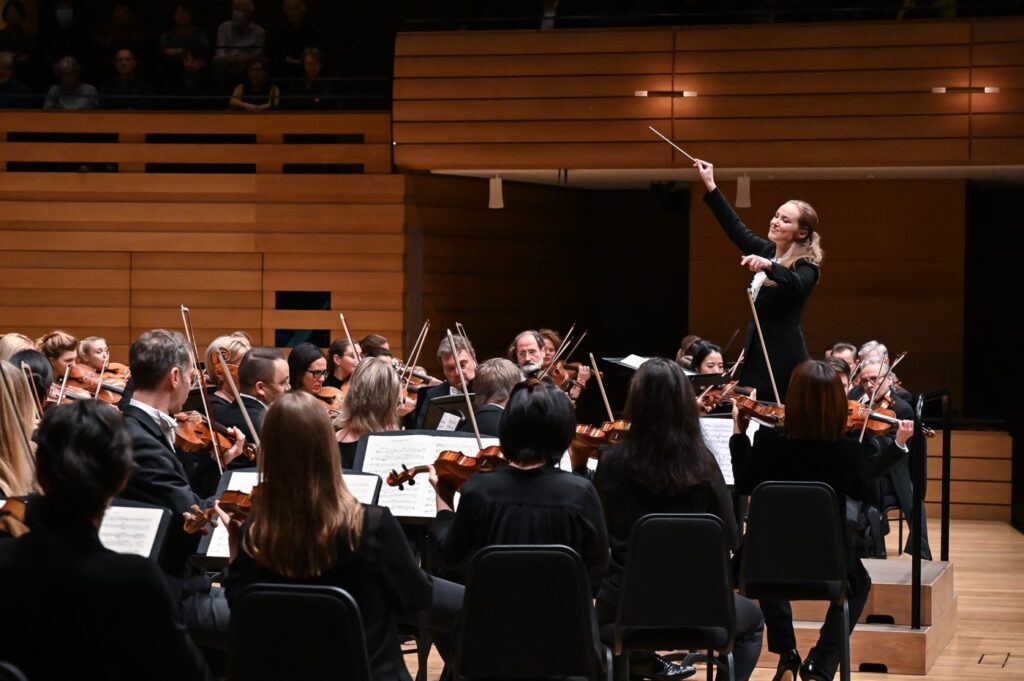
Staatskapelle Berlin Orchestra (Photo courtesy of The Royal Conservatory/Koerner Hall; Lisa Sakulensky)
The audiences gave a very long, approving standing ovation, and Šlekytė graciously made special acknowledgements of each section and principal, diverting the limelight to the orchestra rather than herself. The only disappointment of the night was the lack of encore.
Kudos to the Royal Conservatory for mounting their International Orchestras Series, and bringing such high calibre orchestras to Toronto. Next up is The Philadelphia Orchestra with Yannick Nézet-Séguin in April. Toronto is long overdue for such talent, and has much to look forward to.
Koerner Hall
www.rcmusic.com/performance

